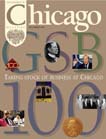The University of Chicago Magazine
December 1997

![]()
3-D DIAGNOSIS:
Using software that was originally designed for architects, Raphael Lee and a team of researchers at the U of C Hospitals' Burn Center have developed a three-dimensional model to evaluate burn patients' wounds. Compared to the standard Lund-Browder diagrams, pencil drawings which approximate a male or female body-child or adult-the new program is much more precise, taking into account a patient's unique physique. More accurately calculating the percentage of wounded surface areas and wound depth, it orders up a specifically matched treatment. Lee's team hopes the program will also help them develop new therapies for burn patients.
CLOUDS OVER MARS:
Since the 1970s, when Viking provided detailed images of Mars, showing deep channels presumably cut by flowing water, scientists have wondered how the chilly planet's surface could have been warm enough for liquid water. Now U of C geophysical-sciences professor Raymond Pierrehumbert has an answer: reflective carbon-dioxide ice clouds. With French climatologist François Forget, Pierrehumbert produced an atmospheric model of ancient Mars that incorporates carbon dioxide, assuming a global warminglike effect. The condensing carbon dioxide, they posit, produces a dry-ice "blanket" that reflects infrared light, retaining thermal radiation near the surface. The model (Nov. 14 Science) increases the likelihood that life exists outside our solar system. And, says Pierrehumbert, it suggests that any life forms on ancient Mars may have resembled "the kinds of organisms that might evolve in extreme environments, like the bottoms of oceans or in caves."
RUSSIA REVEALED:
When Winston Churchill coined the phrase "a riddle wrapped
in a mystery inside an enigma," he was describing Russia, a nation
that-like its successor, the Soviet Union-had long been shut off from Western
observers. With the collapse of Communism and a flood of information from
once-secret archives, the riddle is closer to solution. In The Soviet Experiment:
Russia, the USSR, and the Successor States (Oxford University Press), U
of C political-science professor Ronald Grigor Suny provides a full account.
Suny tells the landmark story by focusing on four revolutionary eras, each
identified with a single leader: Vladimir Lenin's Bolshevik takeover of
the tsarist empire; Joseph Stalin's 1930s refashioning of economy, society,
and state; Mikhail Gorbachev's catastrophic attempt at reform in the mid-1980s;
and the resulting breakup of the Soviet Union, led by Boris Yeltsin.
Also in Investigations:
The Roots of Reform - Frosting on the Cake - Rings around Physics
